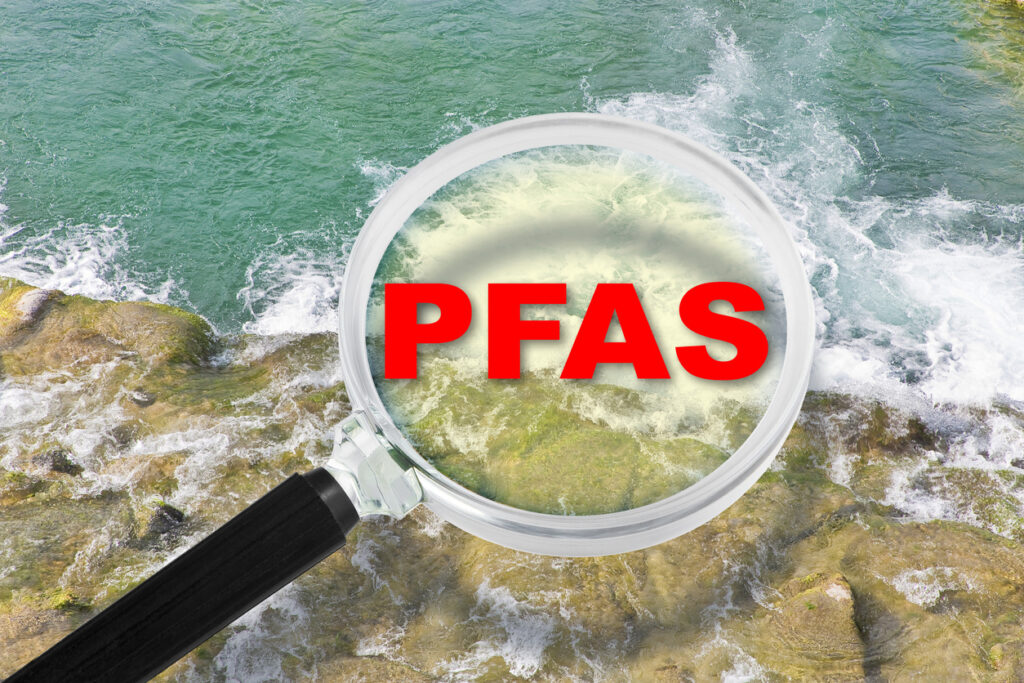- 2 Nov 2025

When a community uncovers PFAS Water Contamination impacting health, the consequences go far beyond environmental concerns. These synthetic chemicals, known for their durability and resistance to degradation, pose serious long-term health risks. Discovery of PFAS in local drinking water can trigger medical fears, property value concerns, and an urgent need for legal action. Taking prompt, informed legal steps is essential for protecting both personal well-being and the rights of your community.
This guide outlines the necessary legal steps individuals and groups should take after identifying PFAS contamination linked to illness or risk. From documentation and testing to exploring class action lawsuits, timing and accuracy are key in building a strong foundation for legal recourse.
Understanding the Health Threat of PFAS Contamination
Before taking legal steps, it’s important to understand the underlying risks. Per- and polyfluoroalkyl substances (PFAS) are used in products like fire-retardant foam, nonstick coatings, and stain-resistant fabrics. Their resistance to breakdown leads to environmental persistence—earning the nickname “forever chemicals.” Once PFAS enter water systems, they can accumulate in the human body over time.
Communities that detect PFAS in drinking water often face increased risks of thyroid disease, liver damage, certain cancers, immune deficiencies, and reproductive complications. Lawsuits based on PFAS Water Contamination impacting health rely on proving this connection with scientific and medical evidence.
Step One: Document the Discovery of Contamination
If your community suspects or confirms PFAS contamination, start by compiling all available documentation. This includes:
- Government-issued water quality reports
- Independent laboratory tests confirming PFAS presence
- Notifications from local or federal environmental agencies
- Reports from environmental consultants
Your legal claim will need a documented timeline of when contamination was discovered and how long it persisted. The more official your sources, the stronger your foundation becomes in demonstrating exposure.
Step Two: Seek Medical Testing for Exposure
Once contamination is verified, it’s crucial to determine if exposure has affected your health. Blood serum testing can detect PFAS levels, especially for chemicals like PFOA and PFOS, which are commonly found in contaminated communities.
If you or your family members exhibit symptoms aligned with PFAS-linked illnesses, seek medical evaluation immediately. Make sure that:
- Your doctor documents your medical history and suspected exposure
- You request copies of all lab work and diagnoses
- You maintain updated records of symptoms and treatments
This evidence becomes central to proving that PFAS Water Contamination impacting health directly caused your condition.

Step Three: Identify Responsible Parties
To take legal action, there must be a clear connection between your exposure and a liable entity. PFAS contamination often originates from industrial plants, airports, military bases, or waste disposal facilities. Identifying the source may involve:
- Reviewing environmental agency records
- Examining industrial discharge permits
- Collaborating with environmental scientists or legal teams
Once the source is known, legal claims can be targeted appropriately. Demonstrating negligence or failure to control PFAS release greatly strengthens your claim.
Step Four: Notify Local and State Authorities
Report your findings to local health departments, water boards, and state environmental agencies. Official acknowledgment of contamination will bolster your credibility and could trigger regulatory investigations. In many cases, authorities may assist in further water testing, issue public health warnings, or open enforcement cases.
Filing these reports also creates a paper trail that proves awareness and urgency, which becomes important in meeting the legal requirement of prompt action after discov
Step Five: Join or Initiate Legal Action
Depending on your situation, you may be eligible to join an existing class action lawsuit or pursue an individual claim. Many communities have already begun class actions against PFAS manufacturers, especially in areas with long-standing exposure.
For those with severe or unique health consequences, an individual toxic tort claim may yield better results. Either way, your ability to prove PFAS Water Contamination impacting health will depend on:
- Verified exposure data
- Reliable medical documentation
- A provable link to the responsible entity
To better understand what’s involved in these cases, review this comprehensive guide on how PFAS contamination can impact your health and your right to take legal action.
Building a Community-Wide Case Through Collective Action
In many contaminated areas, community organizing becomes a powerful tool. Residents who band together to demand justice can:
- Pool resources to fund legal or environmental investigations
- Generate media attention to pressure local officials and companies
- Build a unified voice for class action litigation
Class action lawsuits are particularly effective when large numbers of people face similar health risks from the same source. By creating a unified narrative of PFAS Water Contamination impacting health, your group can present a compelling case for compensation and remediation.
Environmental Testing and Scientific Support
Credible environmental testing is vital. Third-party labs can test residential water supplies, nearby soil, and local wells for PFAS compounds. Scientific data such as this can establish a clear contamination footprint.
Additionally, tapping into toxicology studies, GIS mapping of contaminated zones, and federal reports can help tie your community’s exposure to national data. Agencies like the EPA have released toxicity assessments and PFAS health advisories that support legal claims when cited correctly.
Understanding the Legal Timeframe for Action
Each state enforces its own statute of limitations for personal injury and environmental lawsuits. The timeframe often begins when the plaintiff “discovers” or “should have discovered” the contamination and its link to injury.
If your community just became aware of PFAS pollution, that discovery date may start the clock. However, if contamination was known for years and no action was taken, your legal options may be limited. To preserve eligibility, legal action must begin promptly and be backed by valid documentation.
Proving Long-Term Impact on Health and Property
To receive compensation, plaintiffs must prove actual harm. In PFAS cases, harm includes both physical illness and economic damage. This might include:
- Cancer treatments and medical bills
- Property devaluation due to soil or water contamination
- Mental anguish from living in a hazardous environment
- Lost income due to ongoing health complications
The stronger your evidence linking PFAS exposure to these outcomes, the more likely your lawsuit will result in a favorable outcome.

The Role of Public Records in Strengthening Your Claim
Public documents are instrumental in building a compelling legal case. These include:
- Utility billing records proving long-term water usage
- Health advisories issued by public officials
- Permit history for nearby industrial sites
- Prior environmental compliance violations by suspected parties
By assembling a strong file of public records and personal documentation, you help create a timeline that supports your claim of PFAS Water Contamination impacting health and its harmful consequences.
Monitoring Future Health After PFAS Exposure
Even if you’re not currently sick, PFAS exposure can still result in long-term health risks. Courts in some jurisdictions have allowed claims for medical monitoring, allowing exposed individuals to seek damages that cover the cost of future tests and check-ups.
If you’ve been exposed but haven’t yet developed a related condition, consult healthcare providers to begin periodic monitoring. These early efforts can become important legal evidence if future symptoms arise.
Understanding Insurance Settlement Options
Legal battles involving PFAS contamination don’t always go to trial. Some defendants may opt for settlement to avoid reputational harm or lengthy court proceedings. If a settlement is offered, it’s crucial to evaluate:
- Whether the amount fairly compensates for your losses
- If future medical costs are included
- How group settlements may reduce individual payouts
To gain insight into the financial side of these cases, especially in Texas, it helps to explore how insurance settlements are handled by personal injury attorneys in Alvin, TX.

When Legal Help Becomes Essential
While community awareness and documentation are vital, navigating PFAS litigation without professional legal support can be difficult. Determining who to sue, what kind of evidence will be admissible, and how to meet procedural deadlines requires precision. Taking early legal steps ensures your rights are protected, even in a complex toxic exposure case.
Conclusion: Protecting Your Health and Legal Rights
When your community uncovers PFAS Water Contamination impacting health, it’s not just an environmental issue—it’s a legal emergency. Acting swiftly to document exposure, get medical testing, and understand your legal options is critical. From class actions to individual injury claims, your ability to hold polluters accountable depends on your preparation.
Don’t wait until symptoms worsen or contamination spreads. Legal action not only protects your personal health but also safeguards your entire community from future harm.
Recent posts
- 17 Oct 2025
Categories
- Accident & Injury Law (54)
- AI (1)
- Copyright Law (1)
- Criminal & Civil Law (17)
- Disability Law (2)
- Driving Law (2)
- Employment Law (1)
- Estate Planning (2)
- Family & Relationship Law (29)
- Food and Drink (2)
- Gas Exposure (1)
- Health (1)
- Immigration Law (2)
- Injury Claim (1)
- Insurance Law (7)
- Legal (40)
- Lemon Law (4)
- Mediation (3)
- Medical Malpractice (1)
- Property & Business Law (9)
- Severance Agreement (1)
- Travel and Leisure (1)
- Uncategorized (12)
- Worker Compensation (2)

